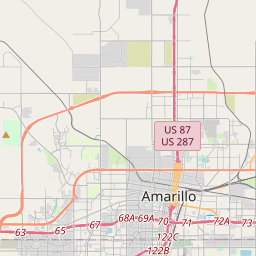Fisk Medical Arts & Professional Building
Historical marker location:






In 1926, Charles A. Fisk, president of the Amarillo Bank and Trust, and other investors commissioned this skyscraper designed by Amarillo architect Guy A. Carlander and built by the Gilsonite Contracting Co. of Dallas. The building formally opened in Dec. 1928, when an Amarillo Daily News article reported its cost as “dangerously close” to one million dollars. Fisk’s bank occupied the ground floor, with a mix of professional and retail tenants above. The eleven-story steel-reinforced concrete frame building is clad in red brick with terra cotta trim and exhibits gothic revival style detailing
As one of the most visible programs of the Texas Historical Commission (THC), historical markers commemorate diverse topics in Texas history, including: the history and architecture of houses, commercial and public buildings, religious congregations, and military sites; events that changed the course of local and state history; and individuals who have made lasting contributions to the state, community organizations, and businesses.
Texas is home to the world's largest bat colony. The Bracken Bat Cave, near San Antonio, is home to millions of Mexican free-tailed bats.
In 1876, Potter County was officially established and named after Robert Potter, a lawyer and signer of the Texas Declaration of Independence. The county's first town, Amarillo, was founded soon after and quickly became the county seat. Initially, Amarillo served as a cattle shipping point and a center for trade, attracting businesses and settlers from surrounding areas.
The early 20th century brought significant development to Potter County. The discovery of oil in nearby areas in the 1920s led to a boom in the county, with oil companies setting up operations and bringing wealth and jobs to the region. This growth and prosperity continued throughout the 20th century, with Amarillo becoming a major economic and cultural hub in the Texas Panhandle.
Today, Potter County continues to thrive as a vibrant community. Its economy is diversified, with significant contributions from industries such as healthcare, education, agriculture, and tourism. The county boasts numerous parks, museums, and attractions, making it an attractive destination for visitors. With its rich history and ongoing growth, Potter County remains a significant contributor to the heritage and economy of Texas.
Potter County Timeline
This timeline provides a concise overview of the key events in the history of Potter County, Texas.
- Potter County is formed on August 21, 1876
- In 1886, Amarillo becomes the county seat of Potter County
- The first courthouse in Potter County is built in 1887
- The first oil well is drilled in Potter County in 1921
- Potter County experiences significant growth during the oil boom of the 1920s
- Palo Duro Canyon State Park is established in Potter County in 1934
- In 1951, the Pantex Plant is established in Potter County, becoming a key facility for the assembly and disassembly of nuclear weapons
- The Tri-State Fair & Rodeo, held annually in Potter County, celebrates its 100th anniversary in 2021